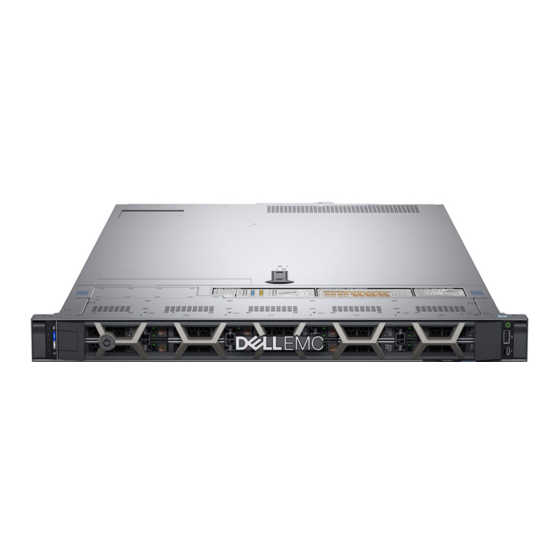
Dell EMC VxFlex Ready Node Manuals
Manuals and User Guides for Dell EMC VxFlex Ready Node. We have 4 Dell EMC VxFlex Ready Node manuals available for free PDF download: User Manual, Installation Manual, Operating System Installation Manual
Dell EMC VxFlex Ready Node User Manual (354 pages)
Table of Contents
-
-
Tables13
-
Preface15
-
Introduction17
-
-
-
Architecture25
-
System26
-
-
Cache38
-
Networking40
-
IP Addresses41
-
VLAN Support42
-
Snapshots61
-
V-Trees62
-
-
Performance66
-
Maintenance73
-
-
-
-
-
Filter99
-
Command Menu100
-
Table100
-
Backend Filter100
-
-
Alerts View104
-
-
Property Sheets105
-
-
-
Ping Output120
-
Optimize Linux121
-
Optimize Esxi123
-
Optimize the SVM123
-
-
CLI Basics132
-
Syntax133
-
SDC Operations144
-
-
Linux155
-
-
-
-
-
Cli162
-
-
Collecting Logs187
-
-
-
-
Device207
-
-
-
Adding Volumes215
-
Snapshots215
-
Mapping Volumes219
-
Removing Volumes220
-
-
-
Mode225
-
-
-
Components228
-
-
Renaming Objects233
-
Protection233
-
-
-
Certificates234
-
Preferences234
-
-
Users242
-
-
Sds244
-
-
-
Mode245
-
-
-
(V-Trees)247
-
-
Part 4 Reference251
-
Common Tasks253
-
-
System Events275
-
Event Format276
-
Viewing Events277
-
Event List280
-
Authentication280
-
CLI Commands281
-
MDM284
-
Sdc286
-
Sds286
-
Rebuild290
-
-
General294
-
-
KVM Activities335
-
-
Only)340
-
-
-
Settings341
-
-
Glossary349
-
Advertisement
Dell EMC VxFlex Ready Node Operating System Installation Manual (86 pages)
Table of Contents
-
Figures
5 -
Tables
7 -
-
-
-
-
-
-
Next Steps74
-
Advertisement
Advertisement



